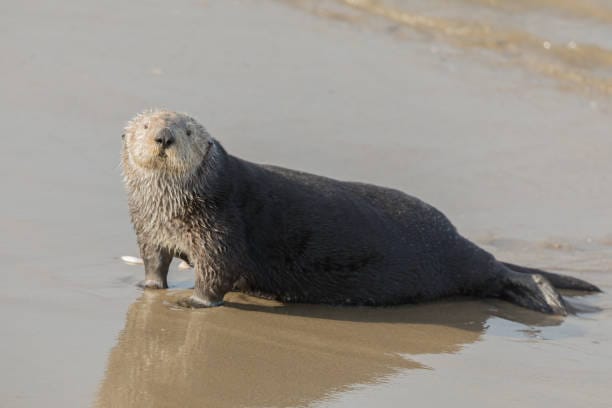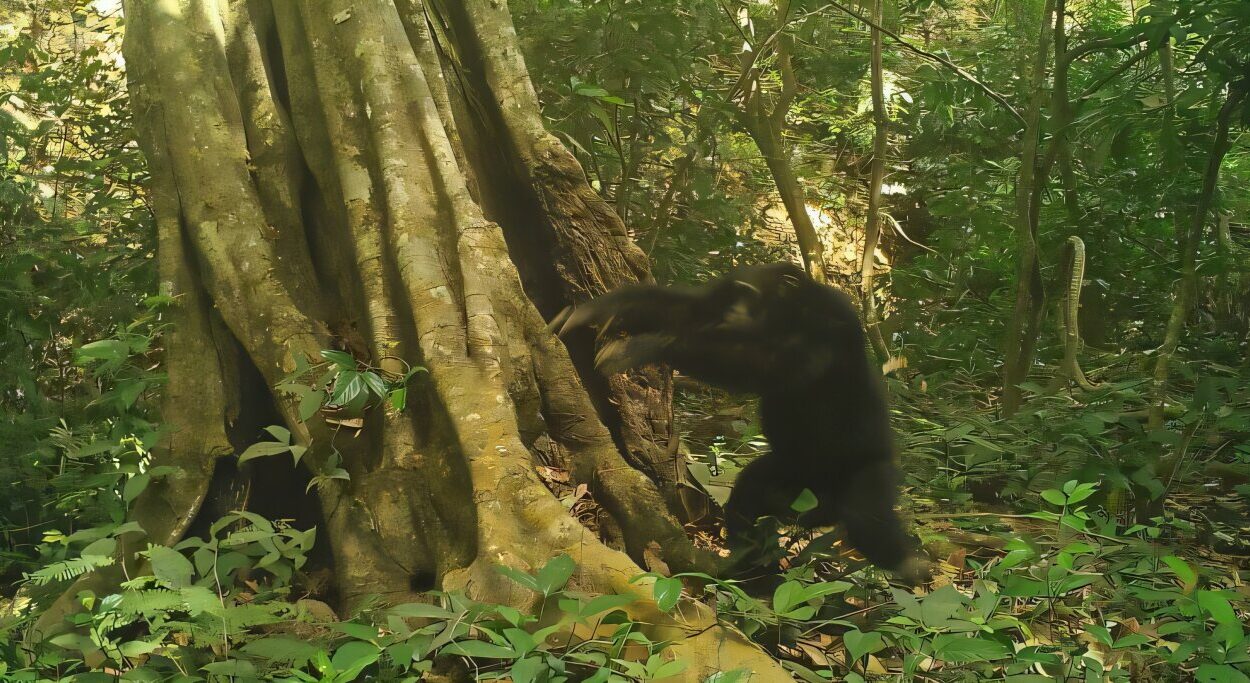Beneath the turbulent surface of the Pacific Ocean lies a vibrant, intricate ecosystem that few people have the chance to witness firsthand. Kelp forests—dense underwater jungles formed by towering seaweeds—sway gracefully with the currents, creating a sanctuary for thousands of marine species. These forests are not just beautiful landscapes; they are vital to coastal biodiversity, carbon sequestration, and even human economies dependent on fishing and tourism.
At the heart of these lush ecosystems lives an unexpected guardian: the sea otter. With their playful antics and fluffy fur, sea otters capture hearts worldwide. Yet, their significance goes far beyond their charm. Sea otters serve as a keystone species, exerting a profound influence that shapes the entire kelp forest community. Without them, the vibrant underwater forests would wither, biodiversity would decline, and coastal ecosystems would be drastically altered.
This article explores the deep ecological connection between sea otters and kelp forests, revealing how this relationship sustains marine life, mitigates climate change, and inspires conservation efforts. It uncovers the science behind the sea otter’s role as an ecosystem engineer and reflects on the urgent need to protect these incredible animals to safeguard the future of our oceans.
Kelp Forests: The Lungs of the Coastal Ocean
Kelp forests are among the most productive and dynamic ecosystems on Earth. These underwater forests are primarily composed of giant kelp species like Macrocystis pyrifera, which can grow up to half a meter per day under ideal conditions. These kelps form dense canopies that extend from the ocean floor to near the surface, creating complex three-dimensional habitats.
Functionally, kelp forests serve multiple crucial roles. They provide shelter and nursery grounds for countless marine species including fish, invertebrates, and marine mammals. The dense canopy acts as a buffer, reducing wave energy and protecting shorelines from erosion. Moreover, kelp forests are highly effective carbon sinks, absorbing large amounts of carbon dioxide through photosynthesis and contributing to the mitigation of global climate change.
Kelp’s fast growth and high productivity make these ecosystems essential for sustaining coastal food webs. They support fisheries that are economically important to human communities. However, kelp forests are delicate, reliant on a balance of species interactions and environmental factors to thrive.
Sea Otters: The Playful Predators with a Purpose
Sea otters (Enhydra lutris) are small, marine mammals renowned for their intelligence and dexterity. Unlike most marine mammals, otters spend their entire lives in the water and rely on their thick fur—the densest in the animal kingdom—to keep warm. Their ability to manipulate objects with their paws, use tools like rocks to open shellfish, and their curious social behaviors have fascinated scientists and the public alike.
Sea otters inhabit the North Pacific coastlines from Alaska down to California and parts of Russia and Japan. Historically, their populations were decimated during the fur trade of the 18th and 19th centuries, but conservation efforts have allowed some populations to recover.
More than their charisma, sea otters are pivotal ecological players. They feed primarily on benthic invertebrates such as sea urchins, crabs, and mollusks. This diet places them at a crucial trophic level where their predation regulates prey populations that could otherwise overwhelm the kelp forests.
The Predatory Control of Sea Urchins: Balancing the Underwater Ecosystem
Among sea otters’ prey, sea urchins hold a critical ecological role. Sea urchins are herbivores that graze directly on kelp holdfasts and blades. When their numbers become uncontrolled, sea urchins can overgraze kelp forests, leading to “urchin barrens” — barren rocky seafloors stripped of kelp and associated biodiversity.
In areas where sea otters thrive, their predation keeps sea urchin populations in check, allowing kelp forests to flourish. The presence of sea otters has been directly linked to healthier, more expansive kelp forests, showcasing a classic example of a trophic cascade—where a top predator indirectly controls the abundance and diversity of species further down the food web.
Scientific studies have demonstrated this dynamic repeatedly. For example, research in Alaska’s coastal waters has shown that when sea otters are abundant, urchin populations remain low, and kelp coverage is high. Conversely, where otters are absent or depleted, unchecked urchin grazing decimates kelp.
This relationship illustrates how sea otters maintain ecosystem stability and resilience. By suppressing sea urchin populations, they promote biodiversity, improve habitat complexity, and sustain the productivity of kelp forests.
The Ripple Effects on Marine Biodiversity
Kelp forests supported by sea otters do not just benefit the kelp itself but also an entire community of marine organisms. The dense kelp canopy creates habitat for juvenile fish, shellfish, and invertebrates. This shelter provides refuge from predators and harsh environmental conditions, enhancing survival rates.
With the kelp forest intact, commercial fish species such as rockfish, salmon, and halibut find feeding and breeding grounds, bolstering fisheries. The kelp ecosystem also supports invertebrates like abalone, which are vulnerable to overharvesting and habitat loss.
The impact of sea otters ripples through the ecosystem in more subtle ways as well. Healthy kelp forests sequester carbon efficiently, contribute to oxygen production, and stabilize sediments that otherwise would increase turbidity and reduce water quality.
Marine mammals, including seals and sea lions, often benefit from the rich biodiversity of kelp forests sustained by sea otters. Some evidence even suggests that the presence of sea otters can influence fish community structure, with cascading effects on predator-prey dynamics.
Sea Otters and Climate Change: Nature’s Carbon Custodians
In the face of accelerating climate change, the ecological role of sea otters gains an even more profound significance. Kelp forests are among the fastest-growing plants on Earth and are highly efficient at absorbing atmospheric carbon dioxide.
By maintaining kelp forests, sea otters indirectly contribute to carbon sequestration—a natural mechanism that helps mitigate the greenhouse effect. When kelp dies or is consumed by other organisms, some of the carbon is transported to deep ocean sediments where it can be stored for centuries, effectively removing it from the atmosphere.
The loss of sea otters, and thus the decline of kelp forests, would not only devastate biodiversity but would also reduce this critical natural carbon sink. This highlights a vital intersection of conservation biology and climate science, where protecting a charismatic marine mammal aligns with global efforts to combat climate change.
The Threats Facing Sea Otters and Kelp Forests
Despite their importance, sea otters and kelp forests face numerous threats from human activities and environmental change. Historically, the fur trade almost eradicated sea otters, and although populations have rebounded in some areas, they remain vulnerable.
Modern threats include oil spills, entanglement in fishing gear, disease, and predation by orcas—especially in areas where sea otters are scarce. Coastal development and pollution degrade kelp habitats, while warming oceans and ocean acidification challenge kelp growth and reproduction.
The spread of invasive species, such as the predatory sea star wasting disease, has also disrupted marine communities, indirectly affecting kelp forest resilience.
Additionally, overfishing of otters’ alternative prey can force them to consume more sea urchins, sometimes leading to local declines in kelp despite otter presence.
Climate-driven changes in ocean temperature and chemistry further threaten this delicate balance, underscoring the need for comprehensive ecosystem management that addresses multiple stressors simultaneously.
Conservation Success Stories: The Return of the Otters
Fortunately, several conservation programs have demonstrated the possibility of restoring this crucial relationship between sea otters and kelp forests. Efforts in the Pacific Northwest and California have reintroduced sea otters to areas where they had been extirpated, resulting in the remarkable recovery of kelp habitats.
In parts of Alaska and British Columbia, monitoring has confirmed that kelp forests expand as sea otters recolonize and control urchin populations. These successes underscore the power of ecosystem-based management and the importance of protecting keystone species.
Community involvement, indigenous stewardship, and scientific research have played vital roles in these conservation achievements, highlighting the need for interdisciplinary approaches.
The Cultural and Economic Importance of Sea Otters and Kelp
Beyond ecological significance, sea otters and kelp forests hold immense cultural and economic value. Indigenous peoples of the Pacific Northwest have long revered sea otters and kelp as integral parts of their heritage, linking them to traditions, art, and subsistence.
Kelp harvesting itself supports industries producing food additives, fertilizers, and pharmaceuticals, while kelp forests bolster tourism through diving and wildlife watching.
Sea otters, with their playful behavior, attract ecotourism and inspire public interest in marine conservation. Protecting these species and habitats can thus yield tangible benefits for local economies and community well-being.
Future Directions: Protecting the Balance of Nature
The intertwined fate of sea otters and kelp forests is a powerful example of how nature’s complexity relies on balance. Protecting this balance requires coordinated efforts: safeguarding otter populations, conserving kelp habitats, mitigating climate impacts, and managing fisheries sustainably.
Scientific advances in remote sensing, genetic analysis, and ecosystem modeling offer new tools to understand and protect these systems. Citizen science and public education can amplify conservation efforts by fostering empathy and awareness.
As threats to marine ecosystems intensify globally, the story of sea otters and kelp forests reminds us that nature’s guardians come in unexpected forms. The playful otter is not just a symbol of wilderness but a critical custodian of one of the ocean’s most productive and beautiful ecosystems.
Conclusion: A Call to Protect Our Ocean’s Forests
The role of sea otters in maintaining kelp forests is a testament to the profound interconnectedness of life. These small mammals, with their gentle paws and keen minds, wield an influence that echoes through the depths of the ocean and beyond. Their presence safeguards biodiversity, stabilizes coastal environments, and contributes to the global fight against climate change.
In an era when ecosystems everywhere face unprecedented threats, the story of sea otters offers hope. It is a story of resilience, interdependence, and the extraordinary power of nature’s balance. By protecting sea otters and the kelp forests they sustain, we protect a vital part of our planet’s heritage—and secure a healthier future for generations to come.






